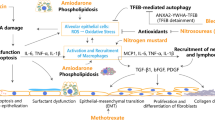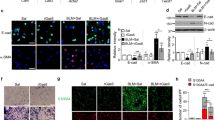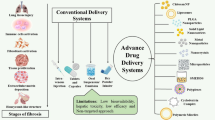Abstract
The molecular and cellular mechanisms that cause cumulative dose-dependent anthracycline-cardiotoxicity remain controversial and incompletely understood. Studies examining the effects of anthracyclines in cardiac myocytes in vitro have demonstrated several forms of cellular injury. Cell death in response to anthracyclines can be observed by one of several mechanisms including apoptosis and necrosis. Cell death by apoptosis can be inhibited by dexrazoxane, the iron chelator that is known to prevent clinical development of heart failure at high cumulative anthracycline exposure. Together with clinical evidence for myocyte death after anthracycline exposure, in the form of elevations in serum troponin, make myocyte cell death a probable mechanism for anthracycline-induced cardiac injury. Other mechanisms of myocyte injury include the development of cellular ‘sarcopenia’ characterized by disruption of normal sarcomere structure. Anthracyclines suppress expression of several cardiac transcription factors, and this may play a role in the development of myocyte death as well as sarcopenia. Degradation of the giant myofilament protein titin may represent an important proximal step that leads to accelerated myofilament degradation. Titin is an entropic spring element in the sarcomere that regulates length-dependent calcium sensitivity. Thus titin degradation may lead to impaired diastolic as well as systolic dysfunction, as well as potentiate the effect of suppression of transcription of sarcomere proteins. An interesting interaction has been noted clinically between anthracyclines and newer cancer therapies that target the erbB2 receptor tyrosine kinase. Studies of erbB2 function in viro suggest that signaling through erbB2 by the growth factor neuregulin may regulate cardiac myocyte sarcomere turnover, as well as myocyte-myocyte/myocyte-matrix force coupling. A combination of further in vitro studies, with more careful monitoring of cardiac function after exposure to these cancer therapies, may help to understand to what extent these mechanisms are at work during clinical exposure of the heart to these important pharmaceuticals.


Similar content being viewed by others
References
Buzdar, A., Marcus, C., & Smith Y. (1985). Early and delayed clinical cardiotoxicity of doxorubicin. Cancer, 55, 2761–2765.
Allen, A. (1992). The cardiotoxicity of chemotherapeutic drugs. Seminars in Oncology, 19, 529–542.
Torti, F. M., et al. (1983). Reduced cardiotoxicity of doxorubicin delivered on a weekly schedule. Assessment by endomyocardial biopsy. Annals of Internal Medicine, 99(6), 745–749.
Sawyer D. B., Fukazawa, R., Arstall, M. A., & Kelly, R. A. (1999). Daunorubicin-induced apoptosis in rat cardiac myocytes is inhibited by Dexrazoxane. Circulation Research, 84, 257–265.
Lipshultz, S. E., et al. (2004). The effect of dexrazoxane on myocardial injury in doxorubicin-treated children with acute lymphoblastic leukemia. The New England Journal of Medicine, 351(2), 145–153.
Unverferth, D. V., Magorien, R., Unverferth, B. P., Talley, R. L., Balcerzad, S. P., & Baba, N. (1981). Human myocardial morphologic and functional changes in the first 24 hours after doxorubicin administration. Cancer Treatment Reports, 65, 1093–1097.
Lipshultz, S., Rifai, N., Sallan, S., et al. (1997). Predictive calue of cardiac troponin T in pediatric patients at risk for myocardial injury. Circulation, 96, 2641–2648.
Arola, O. J., Saraste A., Pulkki, K., Kallajoki, M., Pravinen, M., & Voipio-Pulkki, L. M. (2000). Acute doxorubicin cardiotoxicity involves cardiomyocyte apoptosis. Cancer Research, 60, 1789–1792.
Gille, L., & ANohl, H. (1997). Analyses of the molecular mechanism of adriamycin-induced cardiotoxicity. Free Radical Bioogly and Medicine, 23, 775–782.
Pouna, P., Bonoron-Adele, S., & Gouverneur, G. (1996). Development of the model of rat isolated perfused heart for the evaluation of anthracycline cardiotoxicity and its circumvention. British Journal of Pharmacology, 117(7), 1593–1599.
Rajagopalan, S., Politi, P., Sinha, B. K., & Myers, C. E. (1988). Adriamycin-induced free radical formation in the perfused rat heart: Implications for cardiotoxicity. Cancer Research, 48, 4766–4769.
Yen, H. C., Oberley, T., Vichitbandha, S., Ho, Y. S., & St Clair, D. K. (1996). The protective role of manganese superoxide dismutase agaiast Adriamycin induced acute cardiac toxicity in transgenic mice. The Journal of Clinical Investigation, 98, 1253–1260.
Wiseman, L. R., & Spencer, C. M. (1998). Dexrazoxane. A review of its use as a cardioprotective agent in patients receiving anthracycline-based chemotherapy. Drugs, 56(3), 385–403.
Kang, Y. J., et al. (2000). Suppression by metallothionein of doxorubicin-induced cardiomyocyte apoptosis through inhibition of p38 mitogen-activated protein kinases. The Journal of Biological Chemistry, 275(18), 13690–13698.
Sheng, Z., Knowlton, K., Chen, J., Hoshijima, M., Brown, J. H., & Chien, K. R. (1997). Cardiotrophin 1 (CT-1) inhibition of cardiac myocyte apoptosis via a mitogen-activated protein kinase-dependent pathway. Divergence from downstream CT-1 signals for myocardial cell hypertrophy. The Journal of Biological Chemistry, 272, 5783–5791.
Xia, Z., Dickens, M., Taingeaud, J., Davis, R. J., & Greenberg, M. E. (1995). Opposing effects of ERK and JNK-p38 MAP kinases on apoptosis. Science, 270, 1326–1331.
Matsui, T., et al. (2001). Akt activation preserves cardiac function and prevents injury after transient cardiac ischemia in vivo. Circulation, 104(3), 330–335.
Hideshima, T., Nakamura, N., Chauhan, D., & Anderson K. C. (2001). Biologic sequelae of interleukin-6 induced PI3-K/Akt signaling in multiple myeloma. Oncogene, 20(42), 5991–6000.
Fukazawa, R., et al. (2003). Neuregulin-1 protects ventricular myocytes from anthracycline-induced apoptosis via erbB4-dependent activation of PI3-kinase/Akt. Journal of Molecular and Cellular Cardiology, 35(12), 1473–1479.
Zhao, Y., et al. (2004). Distinctive regulation and function of PI 3K/Akt and MAPKs in doxorubicin-induced apoptosis of human lung adenocarcinoma cells. Journal of Cellular Biochemistry, 91(3), 621–632.
Wolter, K. G., Hsu, Y., Smith, C. L., Nechushtan, A., Xi, X. G., & Youle, R. J. (1997). Movement of Bax from the cytosol to mitochondria during apoptosis. Journal of Cellular Biology, 139, 1281–1292.
Childs, A. C., et al. (2002). Doxorubicin treatment in vivo causes cytochrome C release and cardiomyocyte apoptosis, as well as increased mitochondrial efficiency, superoxide dismutase activity, and Bcl-2:Bax ratio. Cancer Research, 62(16), 4592–4598.
Green, P. S., & Leeuwenburgh, C. (2002). Mitochondrial dysfunction is an early indicator of doxorubicin-induced apoptosis. Biochimica et Biophysica Acta, 1588(1), 94–101.
Kumar, D., Kirshenbaum, L., Li, T., Danelisen, I., & Singal, P. K. (2001). Apoptosis in adriamycin cardiomyopathy and its modulation by probucol. Antioxidants & Redox Signaling, 3, 135–145.
Yaoita, H., Ogawa, K., Maehara, K., & Maruyama, Y. (1998). Attenuation of ischemia/reperfusion injury in rats by a caspase inhibitor. Circulation, 97, 276–281.
Bremerskov V., & Linnemann, R. (1969). Some effects of daunomycin on the nucleic acid synthesis in synchronized L-cells. European Journal of Cancer, 5, 317–330.
Tewey, K., Chen, G., Nelson, E., & Liu, L. (1984). Intercalative antitumor drugs interfere with the breakage-reunion reaction of mammalian DNA topoisomerase II. The Journal of Biological Chemistry, 259, 9182–9187.
Charron, F., & Nemer, M. (1999). GATA transcription factors and cardiac development. Seminars in Cell & Developmental Biology, 10(1), 85–91.
Grillot, D., Gonzalez-Garcia, M., Ekhterae, D., Duan, L., Inohara, N., Ohta, S., Seldin, M., & Nunez, G. (1997). Genomic organization, promoter analysis and chromsome localization of the mouse bcl-x gene. Journal of Immunology, 158, 4750–4757.
O’Prey, J., Ramsay, S., Chambers, I., & Harrison, P. R. (1993). Trascriptional up-regulation of the mouse cytosolic glutathione peroxidase gene in erythroid cells is due to a tissue-specific 3′ enhancer containing functionally important CACC/GT motifs and binding sites for GATA and Ets trancription factors. Molecular andl Cellular Biology, 13, 6290–6303.
Aries, A., et al. (2004). Essential role of GATA-4 in cell survival and drug-induced cardiotoxicity. Proceedings of the National Academy of Sciences of the United States of America, 101(18), 6975–6980.
Jeyaseelan, R., et al. (1997). A novel cardiac-restricted target for doxorubicin. CARP, a nuclear modulator of gene expression in cardiac progenitor cells and cardiomyocytes. The Journal of Biological Chemistry, 272(36), 22800–22888.
Chen, S., Garami, M., & Gardner, D. G. (1999). Doxorubicin selectively inhibits brain versus atrial natriuretic peptide gene expression in cultured neonatal rat myocytes. Hypertension, 34(6), 1223–1231.
Saadane, N., Alpert, L., & Chalifour, L. E. (1999). TAFII250, Egr-1, and D-type cyclin expression in mice and neonatal rat cardiomyocytes treated with doxorubicin. The American Journal of Physiology, 276(3 Pt 2), H803–H814.
Kim, Y., et al. (2003). Anthracycline-induced suppression of GATA-4 transcription factor: implication in the regulation of cardiac myocyte apoptosis. Molecular Pharmacology, 63(2), 368–377.
Liang Q, De Windt, L., Witt, S. A., Kimball, T. R., Markham, B. E., & Molkentin, J. D. (2001). The transcription factors GATA4 and GATA6 regulate cardiomocyte hypertrophy in vitro and in vivo. The Journal of Biological Chemistry, 276, 30245–30253.
Colucci, W. S., et al. (2000). Adrenergic overload and apoptosis in heart failure: implications for therapy. Journal of Cardiac Failure, 6(2 Suppl 1), 1–7.
Singh, K., et al. (2001). Adrenergic regulation of cardiac myocyte apoptosis. Journal of Cellular Physiology, 189(3), 257–265.
Von Hoff, D., Rozencweig, M., & Piccart, M. (1982). The cardiotoxicity of anti-cancer agents. Seminars on Oncology, 9, 23–33.
Helmes, M., Trombitas, K., & Granzier, H. (1996). Titin develops restoring force in rat cardiac myocytes. Circulation Research, 79(3), 619–626.
Wang, S. M., et al. (1988). Studies on cardiac myofibrillogenesis with antibodies to titin, actin, tropomyosin, and myosin. Journal of Cellular Biology, 107(3), 1075–1083.
Helmes, M., et al. (2003). Titin determines the Frank-Starling relation in early diastole. The Journal of General Physiology, 121(2), 97–110.
Granzier, H., et al. (2005). Titin: physiological function and role in cardiomyopathy and failure. Heart Failure Reviews, 10(3), 211–223.
Lim, C. C., et al. (2004). Anthracyclines induce calpain-dependent titin proteolysis and necrosis in cardiomyocytes. Journal of Biological Chemistry, 279(9), 8290–8299.
Zou, Y., et al. (1997). CARP, a cardiac ankyrin repeat protein, is downstream in the Nkx2–5 homeobox gene pathway. Development, 124(4), 793–804.
Bang, M. L., et al. (2001). Myopalladin, a novel 145-kilodalton sarcomeric protein with multiple roles in Z-disc and I-band protein assemblies. Journal of Cellular Biology, 153(2), 413–427.
Poizat, C., et al. (2000). Proteasome-mediated degradation of the coactivator p300 impairs cardiac transcription. Molecular and Cellular Biology, 20(23), 8643–8654.
Burden, S., & Yarden, Y. (1997). Neuregulins and their receptors: a versatile signaling module in organogenesis and oncogenesis. Neuron, 18(6), 847–855.
Olayioye, M. A., et al. (2000). The ErbB signaling network: receptor heterodimerization in development and cancer. The EMBO Journal, 19(13), 3159–3167.
Yarden, Y., & Sliwkowski, M. X. (2001). Untangling the ErbB signalling network. Nature Reviews. Molecular Cell Biology, 2(2), 127–37.
Slamon, D. J., et al. (2001). Use of chemotherapy plus a monoclonal antibody against HER2 for metastatic breast cancer that overexpresses HER2. The New England Journal of Medicine, 344(11), 783–792.
Baselga, J. (2000). Current and planned clinical trials with trastuzumab (Herceptin). Seminars on Oncology, 27(5 Suppl 9), 27–32.
Meyer, D., & Birchmeier, C. (1995). Multiple essential functions of neuregulin in development. Nature, 378(6555), 386–390.
Crone, S. A., et al. (2002). ErbB2 is essential in the prevention of dilated cardiomyopathy. Nature Medicine, 8(5), 459–465.
Chien, K. R. (2000). Myocyte survival pathways and cardiomyopathy: Implications for trastuzumab cardiotoxicity. Seminars on Oncology, 27(6 Suppl 11), 9–14; discussion 92–100.
Sawyer, D. B., et al. (2002). Modulation of anthracycline-induced myofibrillar disarray in rat ventricular myocytes by neuregulin-1beta and anti-erbB2: potential mechanism for trastuzumab-induced cardiotoxicity. Circulation, 105(13), 1551–1554.
Kuramochi, Y., Guo, X., & Sawyer, D. B. (2006). Neuregulin activates erbB2-dependent src/FAK signaling and cytoskeletal remodeling in isolated adult rat cardiac myocytes. Journal of Molecular & Cellular Cardiology, 41(2), 228–235.
Acknowledgment
This work was supported by the American Heart Association.
Author information
Authors and Affiliations
Corresponding author
Rights and permissions
About this article
Cite this article
Chen, B., Peng, X., Pentassuglia, L. et al. Molecular and cellular mechanisms of anthracycline cardiotoxicity. Cardiovasc Toxicol 7, 114–121 (2007). https://doi.org/10.1007/s12012-007-0005-5
Published:
Issue Date:
DOI: https://doi.org/10.1007/s12012-007-0005-5




